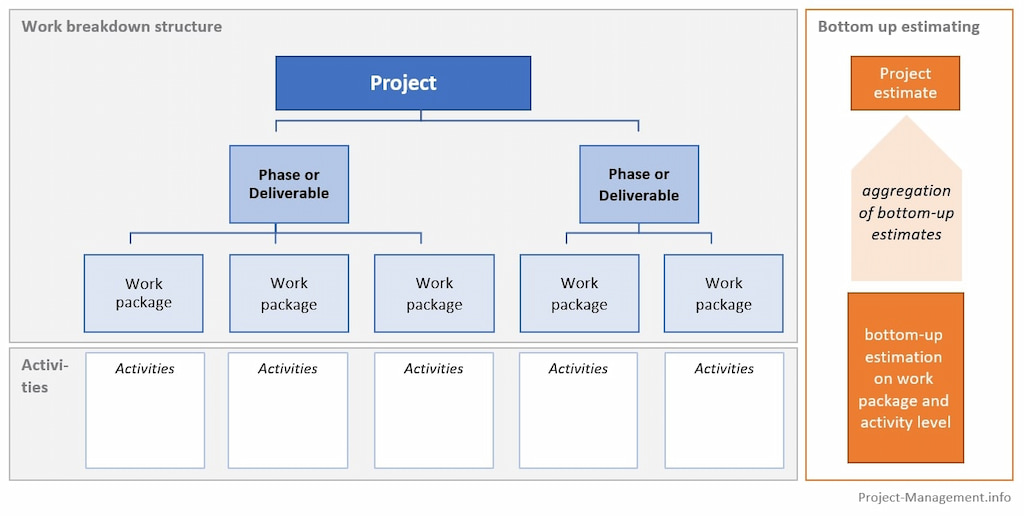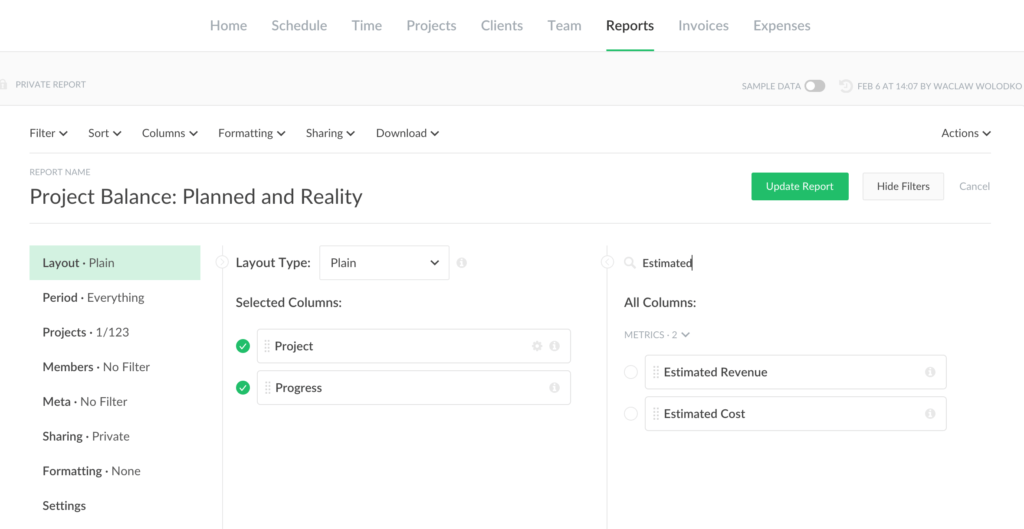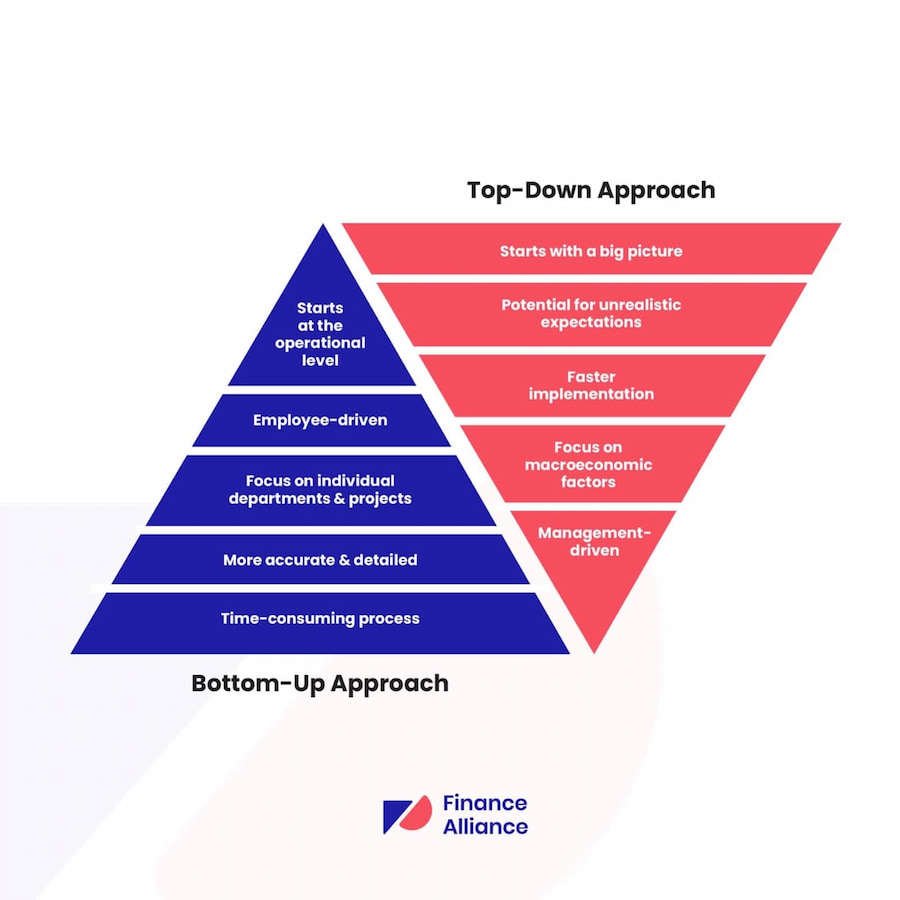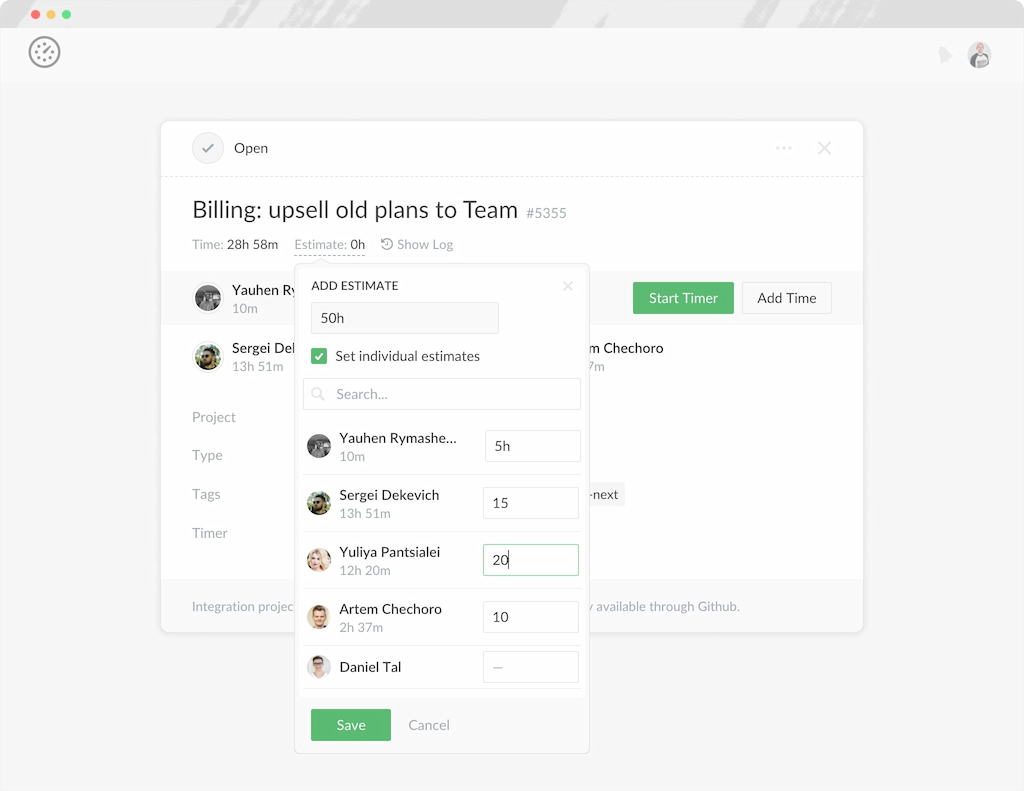Bottom-up estimating is a project management technique that starts with detailed estimates at the task level and aggregates them to form the overall project estimate. This method ensures accuracy by thoroughly analyzing each task and accounting for all necessary resources and time. Tools like best time tracking and invoicing software can complement bottom-up estimating by providing accurate time and resource data. Ideal for complex projects, bottom up estimating provides a precise and comprehensive approach to forecasting project costs and timelines. In this article, we’ll delve into the basics of bottom up estimating in project management, its benefits, and how to implement it effectively.
Bottom-Up Estimating: Definition and Application
Bottom-up estimating is a project management technique that involves estimating the costs and durations of individual tasks or work packages and then summing these estimates to create a comprehensive project budget and timeline. This method starts at the most granular level, allowing project managers to account for every detail, ensuring accuracy and thoroughness.

How good is this technique?
Bottom-up estimating in project management is highly regarded for its accuracy and reliability. By focusing on individual tasks, it ensures that all aspects of a project are considered, reducing the likelihood of overlooked costs or time requirements. This detailed approach can lead to more realistic project plans and budgets, minimizing risks and increasing the chances of project success. However, it can be time-consuming and requires significant effort and expertise in task estimation.
Everhour: enhancing bottom-up estimating
Everhour is an invaluable tool for bottom-up estimating. With its robust time tracking and project management features, Everhour allows teams to break down projects into detailed tasks and accurately track the time and resources spent on each one. This real-time data provides a solid foundation for creating precise bottom-up estimates. Additionally, Everhour’s seamless integration with popular project management tools ensures that all project details are easily accessible and up-to-date, enhancing the accuracy and efficiency of your estimating process.
Essential Steps in Bottom-Up Estimating for Project Success
Bottom-up estimating involves several key components that ensure the accuracy and reliability of project estimates. Understanding and effectively managing these components is essential for successful project planning and execution.
1️⃣ Task identification
The first step in bottom-up estimating is identifying all the individual tasks or work packages that make up the project. This detailed breakdown ensures that no aspect of the project is overlooked, providing a comprehensive view of what needs to be accomplished.
2️⃣ Estimating resources
Once tasks are identified, the next step is estimating the resources required to complete each task. This includes labor, materials, equipment, and any other resources necessary for task completion. Accurate resource estimation is crucial for creating realistic project budgets and timelines.
3️⃣ Duration estimation
Estimating the duration of each task is another critical component. This involves determining how long each task will take to complete, considering factors such as resource availability, task complexity, and potential dependencies. Accurate duration estimates help in developing a realistic project schedule.
4️⃣ Cost estimation
Cost estimation involves calculating the total costs of each task, including labor, materials, equipment, and overhead. Summing these costs provides an overall project budget. Accurate cost estimation helps secure funding and manage project finances effectively.

5️⃣ Risk assessment
Assessing potential risks associated with each task is essential for proactive project management. This involves identifying possible challenges or obstacles that could impact task completion and estimating the likelihood and impact of these risks. A thorough risk assessment enables project managers to develop mitigation strategies and contingency plans.
6️⃣ Integration and summation
After estimating the resources, duration, costs, and risks for individual tasks, the next step is integrating these estimates to create a comprehensive project plan. This involves summing the individual estimates to develop overall project budgets and schedules, ensuring that all aspects of the project are accounted for.
7️⃣ Continuous monitoring and adjustment
Continuous monitoring and adjustment are vital for maintaining the accuracy of bottom-up estimates throughout the project lifecycle. Regularly reviewing and updating estimates based on actual progress and any changes in project scope or requirements helps in keeping the project on track and within budget.
Bottom-Up Estimation: Pros and Cons
Understanding the advantages and disadvantages of bottom-up estimation is essential for determining when and how to use this technique effectively in project management.
✅ Advantages of bottom-up estimation
Accuracy and detail
- In-depth estimates: Bottom-up estimation provides highly accurate and detailed estimates by breaking down the project into individual tasks. This granularity ensures that every aspect of the project is accounted for.
- Realistic planning: The detailed nature of bottom-up estimates allows for realistic project planning and scheduling, reducing the risk of underestimating time and resources.
Improved resource allocation
- Efficient use of resources: By estimating the resources required for each task, project managers can allocate resources more efficiently, ensuring that each task has the necessary inputs to be completed successfully.
- Avoiding overruns: Accurate resource estimates help in preventing resource overallocation or shortages, which can lead to project delays and cost overruns.
Enhanced risk management
- Proactive identification: Breaking down the project into tasks allows for the identification of potential risks at an early stage, enabling proactive risk management.
- Detailed mitigation plans: Detailed task estimates facilitate the development of specific mitigation plans for identified risks, improving the overall resilience of the project.
Greater stakeholder confidence
- Transparency: The detailed breakdown of tasks and resources provides transparency, which can increase stakeholder confidence in the project plan.
- Buy-in and support: Accurate and detailed estimates help in securing stakeholder buy-in and support by demonstrating a thorough understanding of the project requirements.
❌ Disadvantages of bottom-up estimation
Time-consuming process
- Detailed analysis: The detailed nature of bottom-up estimation requires significant time and effort to analyze and estimate each task, making it a time-consuming process.
- Resource intensive: The process demands substantial input from team members and experts, which can be resource-intensive.
Complexity in large projects
- Management challenges: For large projects with numerous tasks, managing and integrating detailed estimates can become complex and challenging.
- Coordination efforts: Coordinating inputs from various team members and ensuring consistency across estimates can be difficult in large projects.
Potential for over-estimation
- Conservative estimates: The detailed focus of bottom-up estimation can sometimes lead to conservative estimates, resulting in potential overestimation of time and resources.
- Buffer inclusion: Team members may include buffers in their estimates to account for uncertainties, leading to inflated overall project estimates.
Dependence on expertise
- Expert knowledge required: Accurate bottom-up estimation relies heavily on the expertise and experience of team members, which may not always be available.
- Varying accuracy: The accuracy of estimates can vary based on the knowledge and experience of the individuals providing the estimates, leading to potential inconsistencies.
By weighing these advantages and disadvantages, project managers can make informed decisions about when to use bottom-up estimation and how to address its potential challenges effectively.
Bottom-Up vs. Top-Down Estimating
Bottom-up estimating
Bottom-up estimating involves breaking down the project into smaller, manageable tasks and estimating the cost and time for each task individually. These estimates are then aggregated to form the total project estimate.
Pros
- Detailed accuracy: Provides highly accurate and detailed estimates.
- Resource allocation: Allows for precise resource allocation.
- Risk management: Facilitates early identification and mitigation of risks.
Cons
- Time-consuming: Requires significant time and effort.
- Complex for large projects: Managing detailed estimates for large projects can be challenging.
Top-down estimating
Top-down estimating starts with the overall project scope and budget, breaking it down into smaller components. This approach uses historical data and expert judgment to estimate the overall cost and duration.
Pros
- Quick and efficient: Faster to produce initial estimates.
- Useful for early planning: Ideal for high-level project planning and decision-making.
- Less resource intensive: Requires fewer details initially, making it less resource-intensive.
Cons
- Less detail: Lacks the granularity of bottom-up estimates.
- Potential inaccuracy: Relies heavily on assumptions and historical data, which may not always be applicable.
Choosing the right approach
Selecting between bottom-up and top-down estimating depends on the project’s complexity, available resources, and the stage of the project planning process. Often, a combination of both methods is used to balance detail and efficiency.

How to Implement Bottom-Up Estimating: Step-by-Step Guide
Step 1: Define the project scope
Clearly outline the project’s objectives, deliverables, and overall scope. This provides a solid foundation for breaking down the project into smaller tasks.
Step 2: Break down the project
Decompose the project into smaller, manageable tasks or work packages. This is often done using a Work Breakdown Structure (WBS) to ensure all components are accounted for.
Step 3: Assign resources
Determine the resources required for each task, including personnel, equipment, and materials. Assign specific team members or departments to each task.
Step 4: Estimate task durations and costs
For each task, estimate the time required to complete it and the associated costs. Use historical data, expert judgment, and detailed analysis to ensure accuracy.
Step 5: Aggregate estimates
Combine the individual task estimates to form the overall project estimate. This includes summing up the costs and durations of all tasks to get a total project budget and timeline.
Step 6: Review and validate
Review the aggregated estimates to ensure they are realistic and feasible. Validate the estimates by comparing them with similar past projects or seeking expert feedback.
Step 7: Monitor and adjust
Once the project is underway, continuously monitor progress against the estimates. Make adjustments as necessary to stay on track and within budget.
Using Everhour for bottom-up estimating
Everhour is a powerful tool that can streamline the bottom-up estimating process. With its detailed time tracking and project management features, Everhour allows teams to accurately estimate task durations and costs. Its reporting capabilities help in aggregating and reviewing estimates, ensuring the project stays on track. By integrating seamlessly with popular project management tools, Everhour enhances the precision and efficiency of bottom-up estimating.

Examples of Bottom-Up Estimating
Example 1: Software development project
In a software development project, bottom-up estimating can be used to predict the effort and cost required for each feature.
1️⃣ Define scope: The project scope includes developing a new mobile application.
2️⃣ Break down the project:
- User interface design
- Backend development
- Integration of third-party APIs
- Testing and bug fixing
3️⃣ Assign resources:
- Design team for UI/UX
- Development team for backend and API integration
- QA team for testing
4️⃣ Estimate task durations and costs:
- UI design: 80 hours
- Backend development: 120 hours
- API integration: 60 hours
- Testing: 40 hours
5️⃣ Aggregate estimates: Total estimated effort is 300 hours, and the cost is calculated based on the hourly rate of each team member.
6️⃣ Review and validate: Compare these estimates with similar past projects and seek feedback from senior developers.
7️⃣ Monitor and adjust: Track the actual time spent to ensure the project stays on track and make adjustments as necessary.
Example 2: Marketing campaign
For a marketing campaign, bottom-up estimating can help in planning and budgeting each component of the campaign.
1️⃣ Define scope: The campaign aims to increase brand awareness through social media, email marketing, and online ads.
2️⃣ Break down the project:
- Social media content creation
- Email marketing design and distribution
- Online ad design and placement
3️⃣ Assign resources:
- Content creators for social media
- Email marketing specialists
- Graphic designers for ads
4️⃣ Estimate task durations and costs:
- Social media content: 50 hours
- Email marketing: 30 hours
- Ad design: 20 hours
5️⃣ Aggregate estimates: Total estimated effort is 100 hours. Costs are calculated based on the hourly rates of the respective team members.
6️⃣ Review and validate: Validate by comparing with previous campaign efforts and consulting with marketing experts.
7️⃣ Monitor and adjust: Use a tracker for the actual time spent on each task and adjust the plan if necessary.
Example 3: Construction project
In a construction project, bottom-up estimating can be crucial for accurate budgeting and scheduling.
1️⃣ Define scope: Building a new office complex.
2️⃣ Break down the project:
- Site preparation
- Foundation laying
- Structural framework
- Electrical and plumbing installation
- Interior finishing
3️⃣ Assign resources:
- Construction workers for site preparation and foundation
- Electricians and plumbers for installations
- Interior designers and finishers
4️⃣ Estimate task durations and costs:
- Site preparation: 200 hours
- Foundation: 300 hours
- Framework: 400 hours
- Electrical and plumbing: 250 hours
- Interior finishing: 300 hours
5️⃣ Aggregate estimates: Total estimated effort is 1450 hours. Costs are determined based on the labor rates and material costs.
6️⃣ Review and validate: Validate against past construction projects of similar scope and consult with senior engineers.
7️⃣ Monitor and adjust: Keep track of the hours worked and adjust plans based on real-time data.
Bottom Up Estimating: Conclusion
Together with a statement of work, bottom-up estimating is a precise method that involves breaking down projects into detailed tasks, leading to accurate and reliable estimates. While it can be time-consuming, the benefits of enhanced precision and collaboration make it worthwhile. Tools like Everhour streamline this process, providing real-time tracking and reporting to ensure projects stay on track. By adopting bottom-up estimating and leveraging tools like Everhour, businesses can improve project management efficiency and achieve better outcomes.
If you are managing a team of 5 or more and looking to boost efficiency, Everhour is the employee management software to keep your team on track. With seamless time tracking, you can easily estimate task durations, forecast project costs, set clear budgets, and generate detailed reports inside Asana, Trello, Jira, or any other pm tool.

